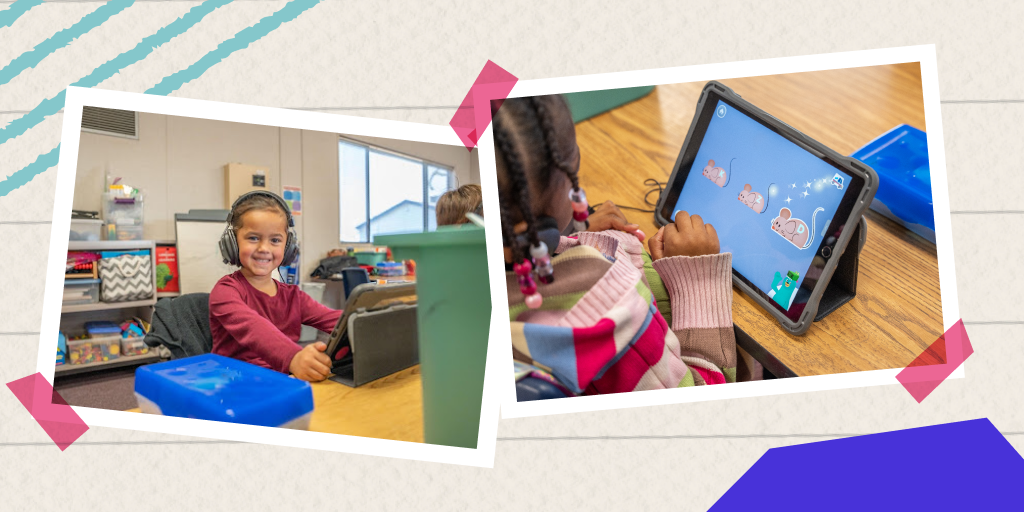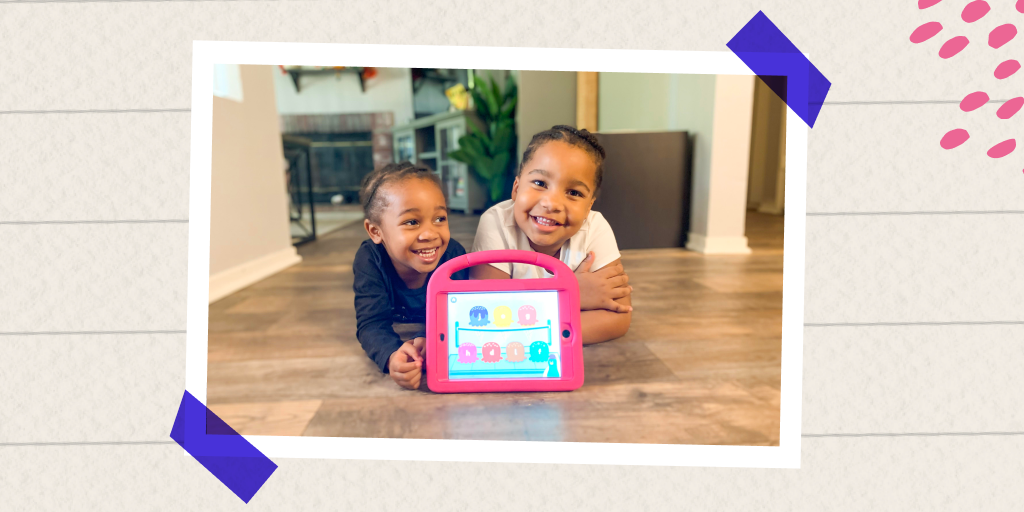

You might be surprised to see a post about early literacy on the Khan Academy blog—a subject and age range that we’re not closely associated with. In fact, Khan Academy has supported millions of learners ages 2-8 since the launch of Khan Academy Kids in 2018.
If you’re reading this post, then you’ve most likely already heard about how important phonics-based reading programs are for creating successful readers. You’re also probably familiar with the sobering learning loss demonstrated by young learners during the pandemic. This post isn’t another article about how we’re failing to teach kids to read. You know that, but you’re probably wondering what to do about it.
Supporting early readers means making sure each child has an excellent teacher who is equipped with the resources and knowledge to support student learning. Foundational literacy, with an emphasis on reading science, is hard to teach well. Many districts are facing a teacher shortage or have new teachers working to hone their skills. Below are five practical strategies school leaders can use to support teachers as they shift their practices to embrace the science of reading.
Every teacher wants their students to succeed. But many teachers don’t have the resources and knowledge to successfully support reading acquisition. Pointing out failing test scores makes teachers feel like failures. Providing research and methods that are proven to get kids reading helps teachers feel like there’s a clear pathway toward success. The research shows that explicit and systematic phonics instruction is effective. Teachers want to be effective. Boom! Winning combination.
Selecting programs with a proven track record of driving literacy gains is a key way you can support your teachers. In a controlled study conducted by researchers at UMASS Amherst, Khan Academy Kids was shown to propel at-risk learners from well below the national average in foundational reading skills to within the national average in just 10 weeks. Those are the same results you would expect to see with expensive one-on-one tutoring sessions. When teachers start experiencing these types of gains in their classroom, they will be convinced that a phonics-focused approach is effective and makes them feel successful.

I know we’re all sick of screens after multiple years of virtual learning. Yet, for the first time ever, many lower elementary classrooms are now 1-1 with devices. This means teachers have access to programs and teaching methods that they couldn’t use in the past.
Skillful phonics instruction can be deceptively tricky to master. I’ll never forget the self-conscious moment when, as a first-year teacher, my admin pulled me aside after an observation to tell me I needed to work on how I isolated sounds. The trouble was, I hadn’t yet had any formal training in phonics instruction and had no idea what my principal was talking about.
By harnessing the power of technology to support phonics instruction, you’re able to provide expert models for new and inexperienced teachers. When teachers are unsure of how to cue a sound, they can lean into technology to model for students until they feel like they have sufficient expertise to model the sound themselves.
While new teachers are getting up to speed, leaning on technology can ensure kids are still getting the instruction they need without cementing any misunderstandings. Programs like Khan Academy Kids are built to provide students with explicit phonetic modeling, which allows them to work independently as they continue to grow their reading skills.

After my principal recognized my deer-in-headlights look during that disastrous phonics lesson, he arranged to have me attend intensive phonics development workshops offered by my district. It gave me the confidence I needed to better serve my students. When you’re adopting new programs or asking teachers to adjust their practice, make sure you’re giving them adequate time and support to absorb what they’re supposed to be teaching.
It’s important to ensure your reading programs come with ongoing professional learning opportunities. Ideally, PD should be customized based on your goals and your teachers’ level of expertise. Better yet, make sure you and other instructional leaders in your building are well-versed in the practices you’re asking teachers to deploy so that you can model and answer questions in the moment. Contact us to learn more about how Khan Academy Kids supports teachers and administrators.

One of the reasons schools moved away from phonics-based instruction in the first place is that teachers felt it was rote, impersonal, and not culturally responsive. The phrase “drill and kill” doesn’t exactly exude the vibe most of us think of or want for our kindergarteners, but that is (sort of) what a systematic approach to phonics instruction requires.
But that doesn’t mean phonics instruction can’t be fun, and it also doesn’t mean teachers can’t put their own personality and style into practice. Thoughtfully adopted resources can move teachers away from the endless worksheets of old and toward activities that are both engaging and delightful while also being incredibly efficacious. Programs like Khan Academy Kids, which are designed specifically to make learning joyful while also maintaining a rigorous alignment to standards, will make phonics feel less rote and more exciting. Plus, high engagement means students will eagerly come back again for more.

This step is obvious in theory, but tremendously challenging in practice. If some of our teachers are still learning about phonics instruction, parents are likely at a loss when it comes to supporting their children along the path to reading. That’s why finding resources that are effortless to use at home is so important.
Similar to using technology to model for teachers, tech at home can act as a model for caregivers and make at-home learning more manageable. With Khan Academy Kids, parents can easily connect to a teacher’s classroom account, and kids can work at home on phonics activities assigned by their teacher. Data appears instantly in the teacher reports, which means there’s no lost information between home and school.
In addition to sharing instantly deployable resources, it’s helpful to give caregivers an overview of how children develop reading skills. Articles like this one offer a high-level view of reading acquisition, as well as practical and proven strategies that are backed by reading science and are fun for parents and kids.

Our team cares deeply about the success of the world’s youngest learners. We strive to provide a resource that will stop achievement gaps in their tracks and prepare children to become lifelong readers. I hope you download the app, explore our literacy content, and share it with your teachers. If you like what you see, connect with us to learn more about using Khan Academy Kids at your school or district.